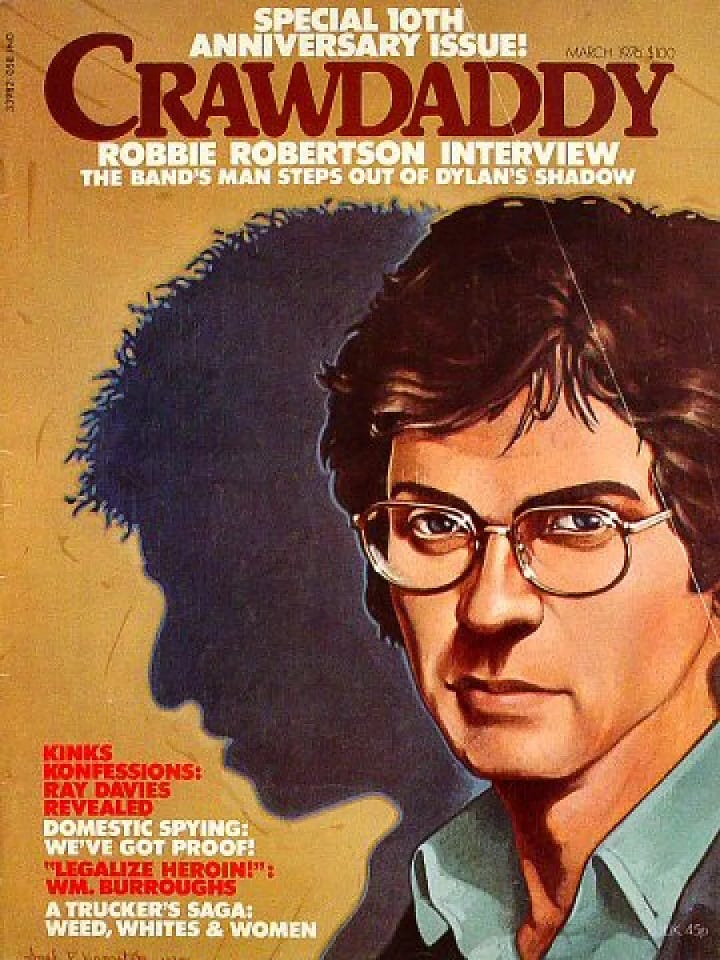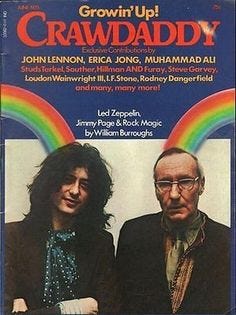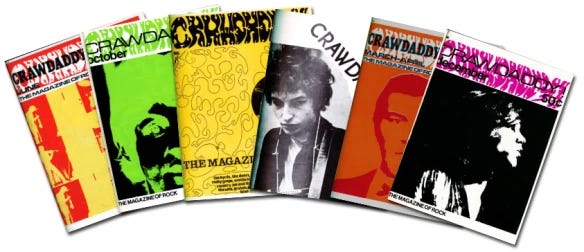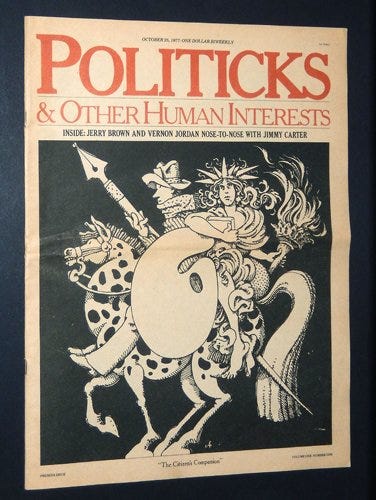You Asked Greg 'Anything'--Now a Few Replies
Down memory lane, plus new music from Allison Russell, Jason Isbell, Natalie Merchant, Tracy Nelson, Aoife O'Donovan.
Greg Mitchell is the author of a dozen books and now writer/director of award-winning films. He was the longtime executive editor of the legendary Crawdaddy. His newsletter remains free when you subscribe. His film “Atomic Cover-up” became free via Kanopy this month and the current “Memorial Day Massacre: Workers Die, Film Buried" remains free on the PBS site. Both have companion books.
A few days back, I introduced a new feature here (far from original), titled “Ask Greg Anything,” and invited queries on any subject or past event that you thought I might know something about or hold a semi-interesting opinion. I have to admit, the response was not exactly off the charts (Billboard or otherwise), but I will probably give it one more try down the line. But for today, here are a few of my responses, more later. If in NYC area, my three recent PBS films all in film festival this week.
Hi Greg, what do you feel is the most significant influence on rock music? Has it been Rhythm and Blues, the Blues only, or some other broader blending of genres, such as Appalachian, the influences from the British and Irish Isles, the Caribbean, Indian Raga-rock, or Jazz? All of these have influenced rock music, but in your experience, what has stood out as the most dominant of these influences? —Regards, Stephen Cocca
Stephen, you answered this more or less yourself with your long list of genres—all contributed, though you left out two of the most significant: gospel and country/hillbilly/honky tonk. Two of the giants within those, of course, were Sam Cooke in his Soul Stirrers gospel beginnings (see my post) and Hank Williams (see here). Impossible to select the “most dominant.” All mixed together in a rich gumbo (did I mention Professor Longhair?).


How did rock fandom change in the 1960s? When did people start seeing it as an art form that was worth writing about? Why?—Richard
It’s true that Paul Williams’ Crawdaddy (which started in 1966, died by early 1971, then revived by yours truly five years later) is commonly viewed as the “first magazine to take rock ‘n roll seriously,” as it is often described. There were teen mags before then, of course, and the venerable Hit Parader, which among other things published song lyrics.
I suppose the “art form” boost arrived in 1965 about a year after the fun and vital British Invasion. Dylan’s final “protest songs” had become more imagistic and poetic (e.g. ‘Chimes of Freedom”), then he went electric yet still gave us beatniky “Desolation Row.'“ The Beatles grew up lyrically and introduced classical elements (“Eleanor Rigby”), electronica (“Strawberry Fields”), raga and many other touches.
Then there were the production innovations by George Martin and Brian Wilson (on Pet Sounds). Jimi Hendrix’s guitar. Janis Joplin’s voice. And soon more '“song poets” such as Leonard Cohen, Joni Mitchell, Townes Van Zandt, Sandy Denny. The mostly excessive but occasionally arty psychedelia. But also more “roots” at last coming forward, including blues revivals (B.B., Muddy, Howlin’, etc.), jazz (Miles going “electric”), American country introduced to a new generation via Byrds, Burritos, Poco, and traditional Brit (Fairport Convention, Pentangle). Not to mention: the Stones. So a lot to write about if you were going to “take rock ‘n roll seriously”!
Late ‘60s/Paul Williams/Meltzer era Crawdaddy gets all the pub and credit. And rightly so. But Crawdaddy in the mid- to late-70s was a terrific music and pop culture magazine that often rivaled Rolling Stone. Can you talk about some of the writers and editors who made Crawdaddy such a great mag during that era? Off the top of my head I think of John Swenson, Timothy White, and Jon Pareles. And of course, future screenwriting star Mitch Glazer. — Steven Ward
No, I did not plant this question. Steven, thanks for asking! Yes, we will forever feel we were popular and influential but underrated during that era. As I mentioned, I was hired to revive the magazine in spring 1971 in NYC after it had gone dark (see my lengthy post here). Peter Knobler, a fine writer in his own right, later became editor and I was his #2, except for a one-year departure, until 1979 when we went el-foldo.
Yes, during that time we hired the late Tim White (from AP) and Mitch Glazer (his first job). Noe Gold (then Goldwasser) was an early record review editor, succeeded by the late John Swenson and finally Jon Pareles (still at The New York Times after 40 years). Barbara Charone in London. Very small staff and very few women, although freelancers included Susan Braudy, Patti Smith, Ellen Sander, Susin Shapiro, and more. Our founder, Paul Williams returned as a regular columnist, joining the likes of William Burroughs and Paul Krassner. Other well-known contributors included Joseph Heller, Richard Price, Gilda Radner, Robert Ward, Cameron Crowe, Erica Jong, Dan Ackroyd, Gil Scott-Heron, and William Kunstler.
You say you worked for the “short-lived NYC magazine Politicks” -- say what? When and what was that publication? And do you have any stories from that gig? —Larry Yudelson
By 1977, I needed a break from Crawdaddy so spent nine months as senior editor at start-up founded by Thomas B. Morgan—one of the most important freelance magazine writers of the ‘50s and ‘60s, then Mayor John Lindsay’s press spokesman and editor of the Village Voice. Money came from several of his longtime friends and his new wife, Mary Morgan, daughter of Nelson Rockefeller. Others staffers included Michael Pollan, in his first editorial position, and my assistant Daniel Brewster. The concept was: New York Review of Books but with more of an emphasis on (duh) politics and full-page art/illustrations/satiric cartoons, often by top New Yorker contributors. Among my duties was editing Greil Marcus’s column and assigning front of the book pieces and features, many by younger political writers such as Joe Conason and Sidney Blumenthal. Published a lot of strong stuff and nominated for a National Magazine Award but money ran out after nine months, and I returned to Crawdaddy.
I'm always looking for new music recommendations. Anything you've been listening to that readers should know about? Maybe a Best of 2023 so far. — Tim Lynch
Sadly, I don’t get to listen to a lot of new releases nowadays. But below, highlights from a few albums I have purchased (at least half of them vinyl starting this year).
Allison Russell, “Eve Was Black”
Jason Isbell, “King of Oklahoma”
Natalie Merchant, “Big Girls”
Tracy Nelson, “Compared to What”
Aoife O’Donovan, “B-61”
Not brand new but listened to this as much as anything this year, indie fave Bill Callahan, “Drover.”
And from fifty years ago but lost to me for most of that time as I did not still have the record and it was not on my CD best-of collection: Nick Drake, “Fly,” with John Cale.



